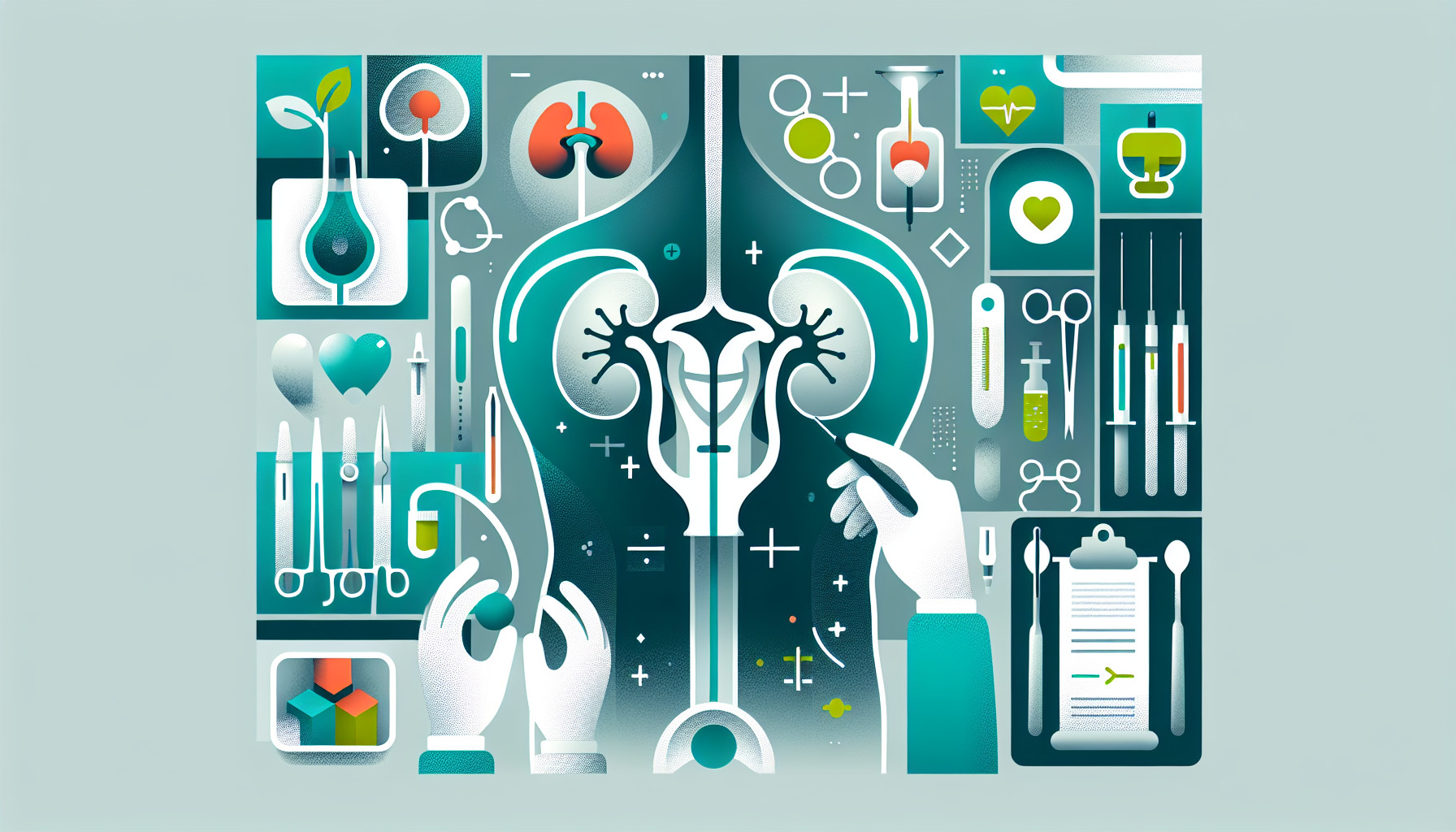Our Summary
This research paper discusses a less invasive surgical technique for temporarily diverting urine flow in children, known as Laparoscopy-assisted cutaneous ureterostomy (LA-CU). This method involves three small incisions in the abdominal area and was performed on 12 children suffering from various conditions. The study found that the surgery was successful, with an average operating time of about 94 minutes. The patients were monitored from 10 to 38 months and no major post-surgery complications were reported. Kidney function and growth rates improved in most of the children. While the preferred treatment for urinary blockages or reflux is surgical correction, this temporary diversion method could be beneficial in certain cases. This laparoscopic approach offers clearer and direct visualization, quick and accurate identification of the ureter, and ensures a tension-free exteriorization. Also, the use of one incision at the eventual stoma site minimizes scarring.
FAQs
- What is Laparoscopy-assisted cutaneous ureterostomy (LA-CU) and why is it performed?
- What were the findings of the research on LA-CU in terms of success rate and post-surgery complications?
- How does the laparoscopic approach to ureterostomy benefit patients, particularly in terms of visualization and scarring?
Doctor’s Tip
A doctor may advise a patient who has undergone ureterostomy to ensure proper care of the stoma site to prevent infection. This includes keeping the area clean and dry, changing the pouch regularly, and monitoring for any signs of irritation or inflammation. Additionally, a doctor may recommend maintaining adequate hydration to promote healthy urine flow and kidney function. Regular follow-up appointments with a healthcare provider are also important to monitor the stoma site and overall health.
Suitable For
Patients who may be recommended for ureterostomy include:
Children with urinary blockages or reflux: Ureterostomy may be recommended for children with urinary blockages or reflux that cannot be corrected through other surgical means. This temporary diversion method can help alleviate symptoms and improve kidney function.
Patients who require temporary urine diversion: Ureterostomy may be recommended for patients who require temporary diversion of urine flow, such as those undergoing treatment for certain medical conditions or awaiting further surgical procedures.
Patients who are not candidates for other surgical options: In some cases, patients may not be suitable candidates for other surgical options to address urinary issues. Ureterostomy may be recommended as a less invasive alternative that can still effectively manage symptoms and improve quality of life.
Patients with specific anatomical considerations: Ureterostomy may be recommended for patients with specific anatomical considerations that make other surgical options less feasible or effective. The laparoscopic approach of LA-CU can provide clearer visualization and accurate identification of the ureter, making it a suitable option for these patients.
Overall, ureterostomy may be recommended for patients who need temporary urine diversion, have specific anatomical considerations, or are not suitable candidates for other surgical options. This less invasive technique can effectively manage urinary issues and improve patient outcomes.
Timeline
Before the ureterostomy surgery:
- Patient undergoes medical evaluation and diagnostic tests to determine the need for the surgery.
- Patient may experience symptoms such as urinary blockages or reflux that warrant surgical intervention.
- Surgical team discusses the procedure, risks, and benefits with the patient and obtains consent.
- Patient is prepared for surgery with pre-operative instructions and fasting guidelines.
After the ureterostomy surgery:
- Patient is monitored in the recovery room and may stay in the hospital for a few days for observation.
- Nursing staff provides post-operative care, including pain management and wound care.
- Patient may experience temporary discomfort, swelling, or bruising at the surgical site.
- Follow-up appointments are scheduled for monitoring kidney function and overall health.
- Patient may need to make lifestyle adjustments to manage the stoma and drainage system.
- Long-term follow-up is required to assess the success of the surgery and address any potential complications.
What to Ask Your Doctor
- What is the reason for recommending ureterostomy as a treatment option in my case?
- Are there any alternative treatment options available for my condition?
- What are the potential risks and complications associated with ureterostomy surgery?
- What is the expected recovery time and post-operative care for ureterostomy?
- Will I need to make any lifestyle changes or modifications after the surgery?
- How often will I need follow-up appointments and monitoring after the surgery?
- What are the long-term effects or implications of undergoing ureterostomy surgery?
- Are there any specific dietary restrictions or recommendations I should follow post-surgery?
- How will ureterostomy impact my daily activities and quality of life?
- Can you provide me with more information about the success rates and outcomes of ureterostomy surgeries in general?
Reference
Authors: Vanderbruggen W, Cherian A, De Baets K, De Wachter S, De Win G. Journal: J Laparoendosc Adv Surg Tech A. 2019 Feb;29(2):286-291. doi: 10.1089/lap.2017.0261. Epub 2018 Oct 24. PMID: 30358477
